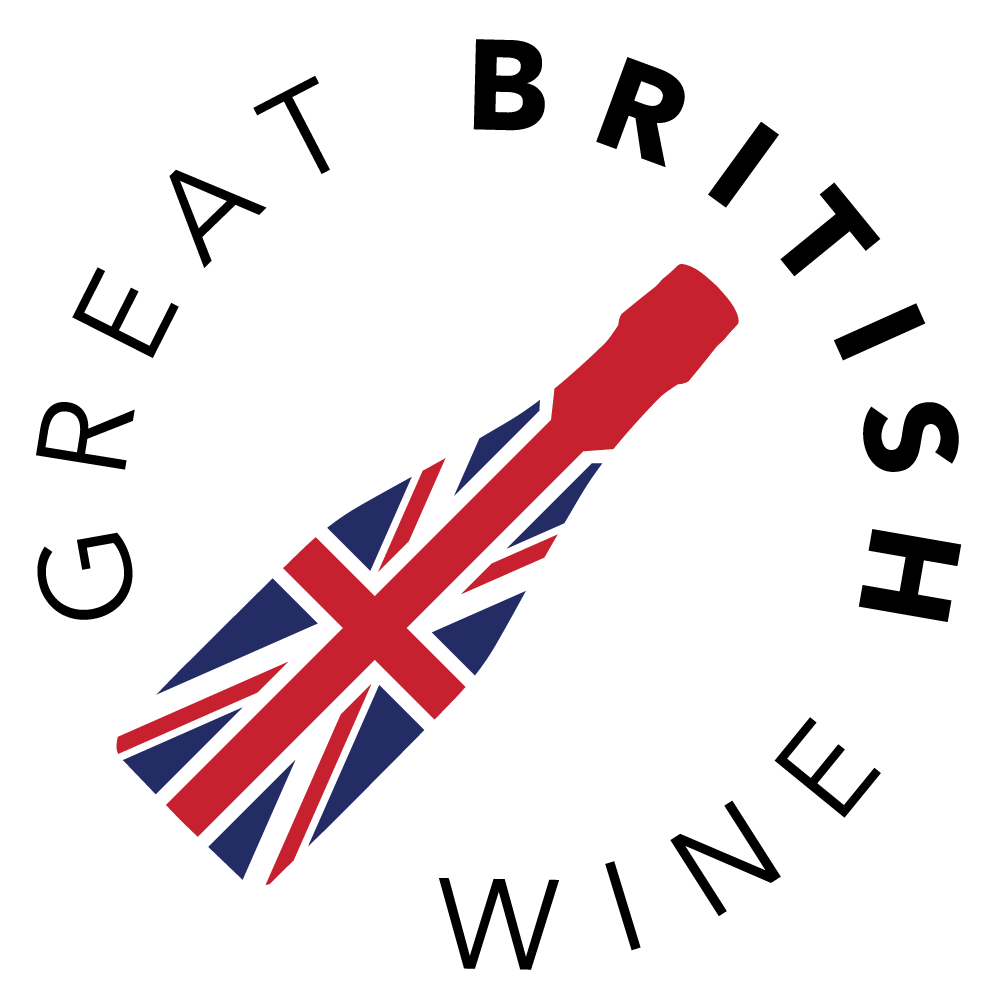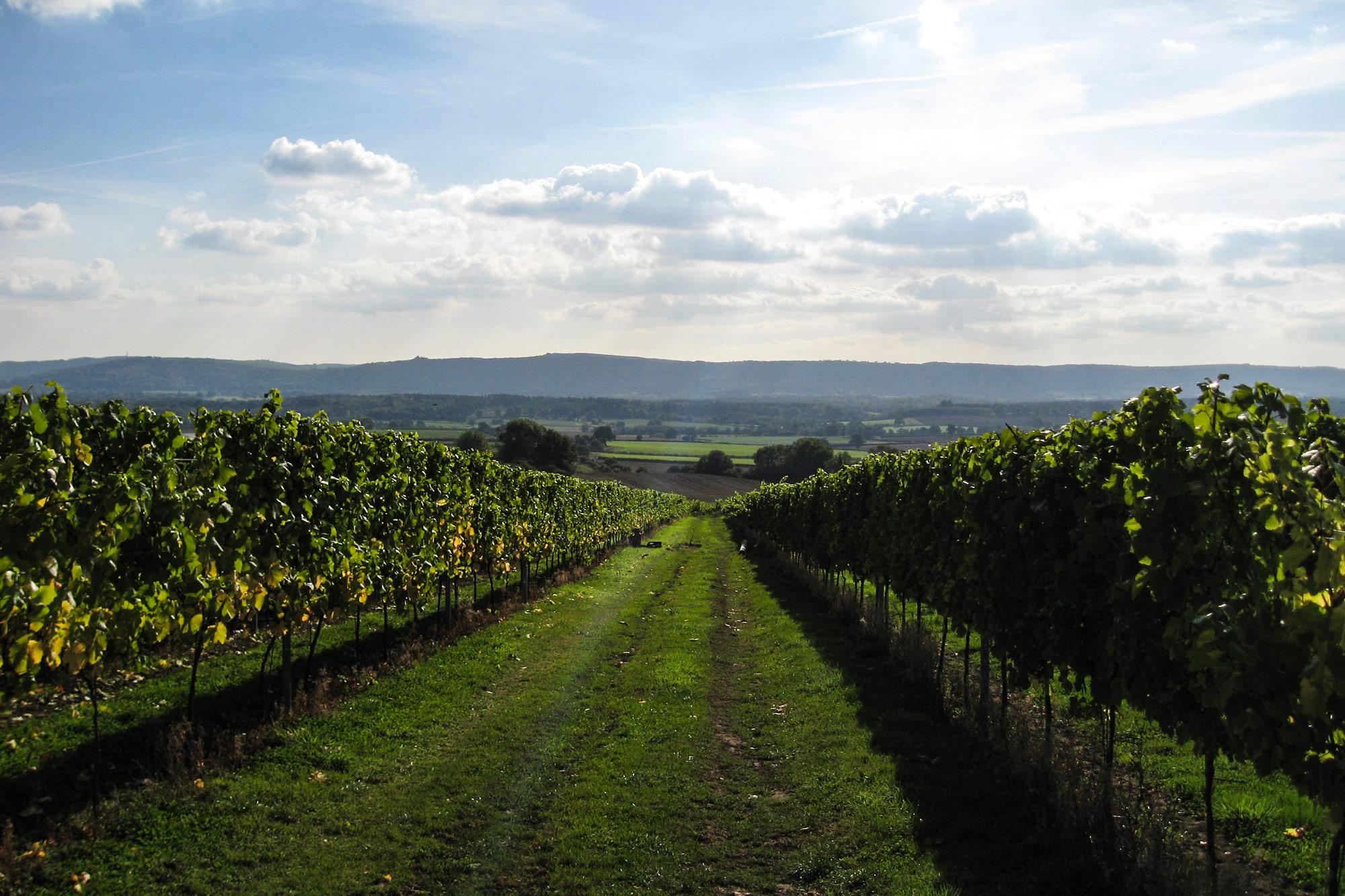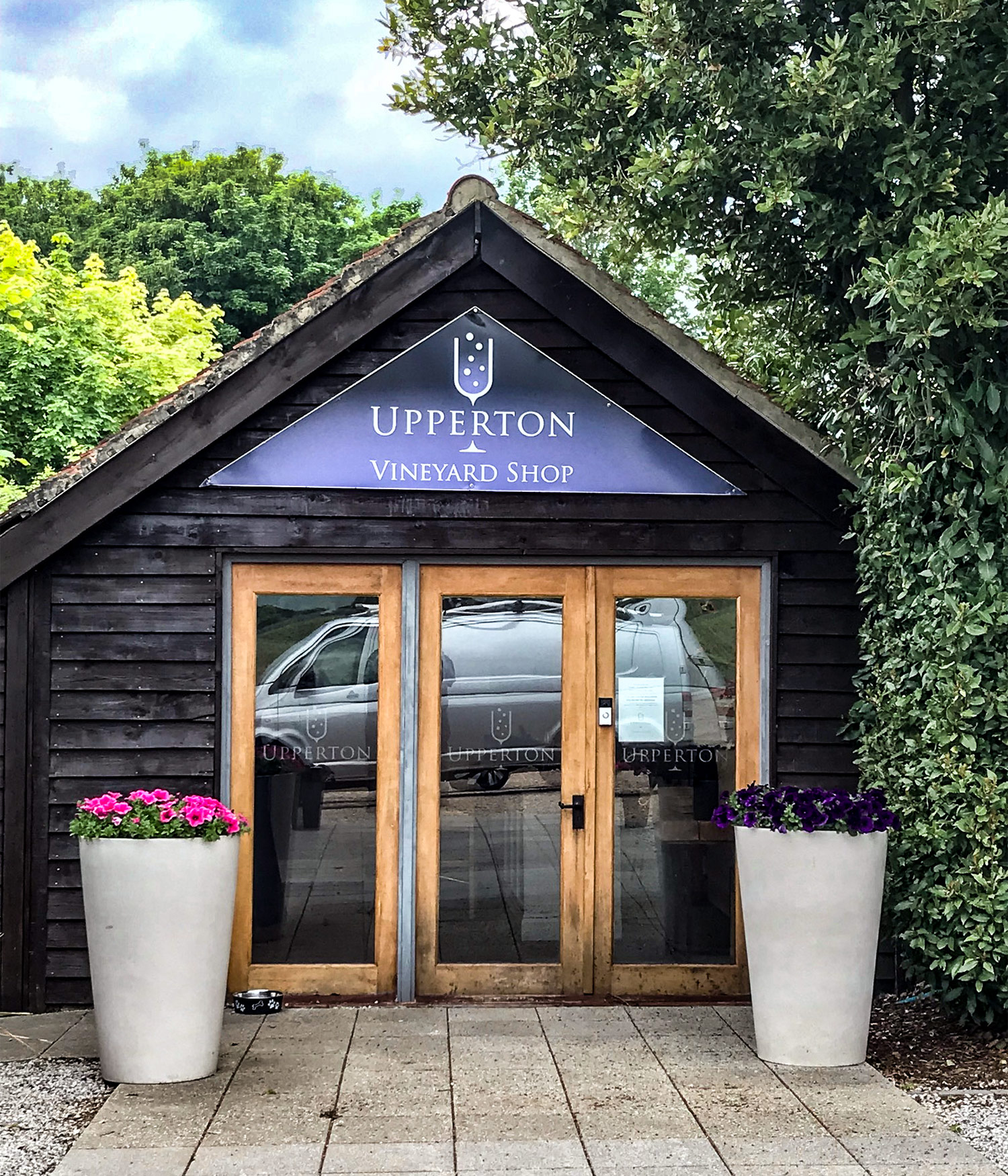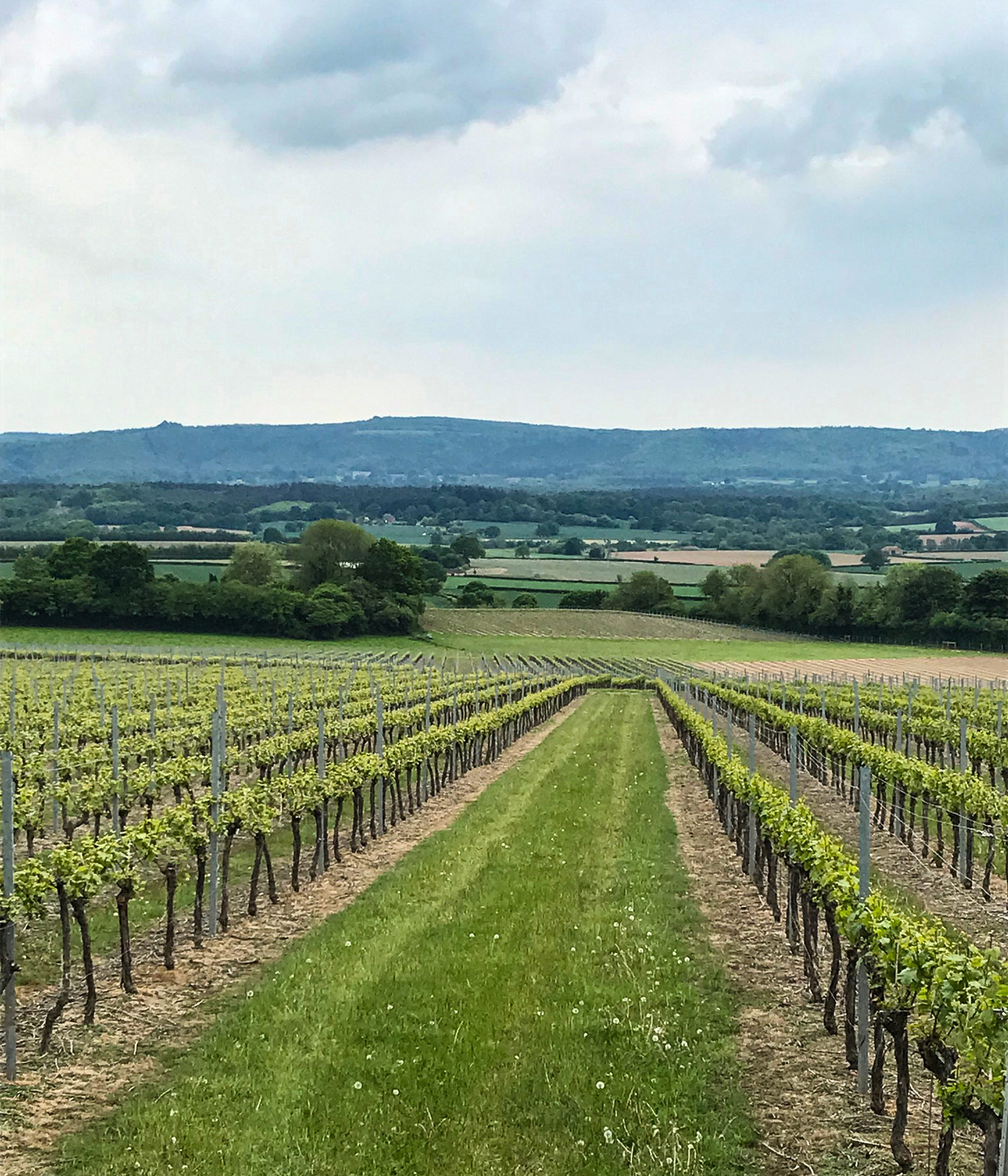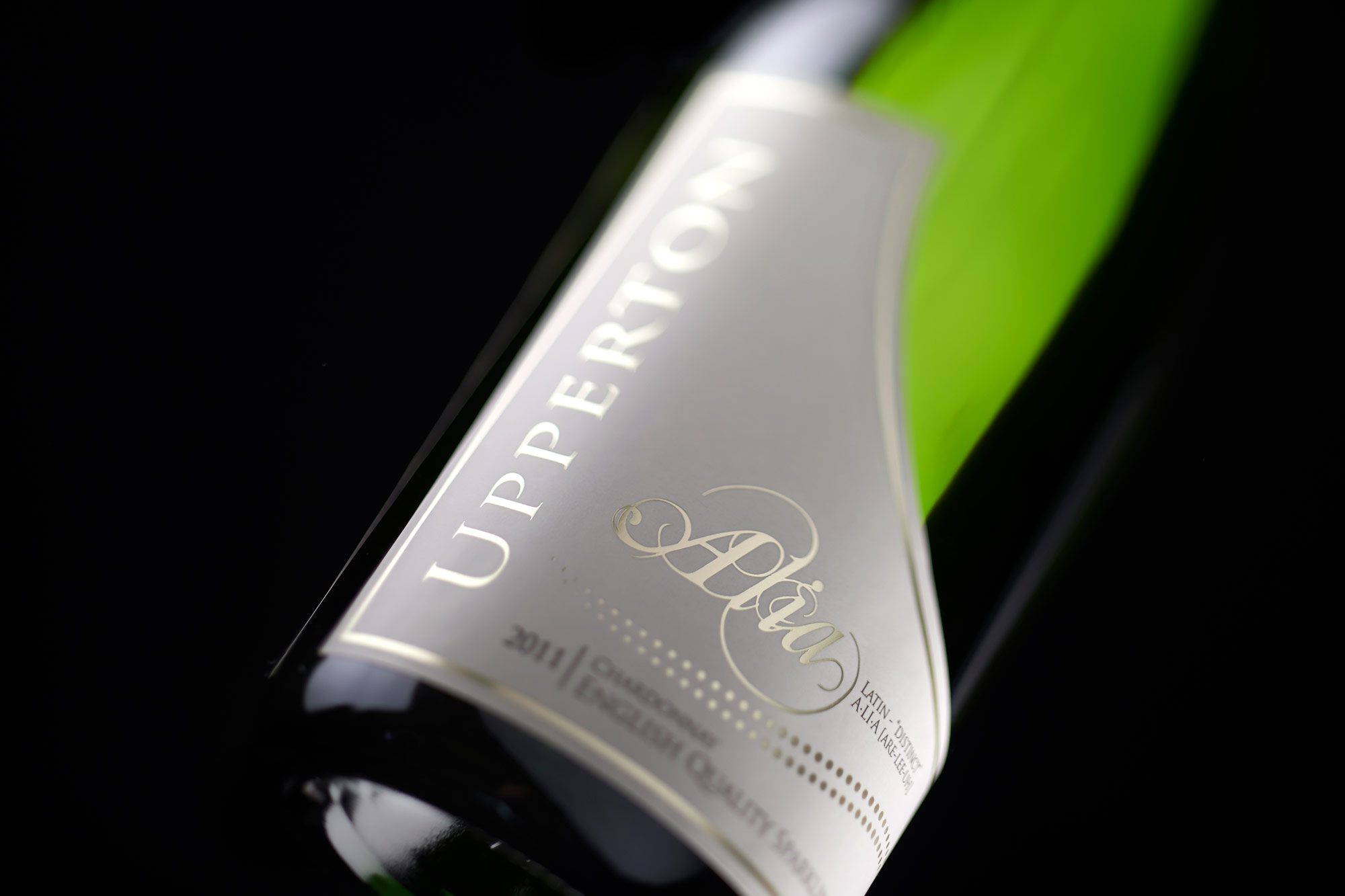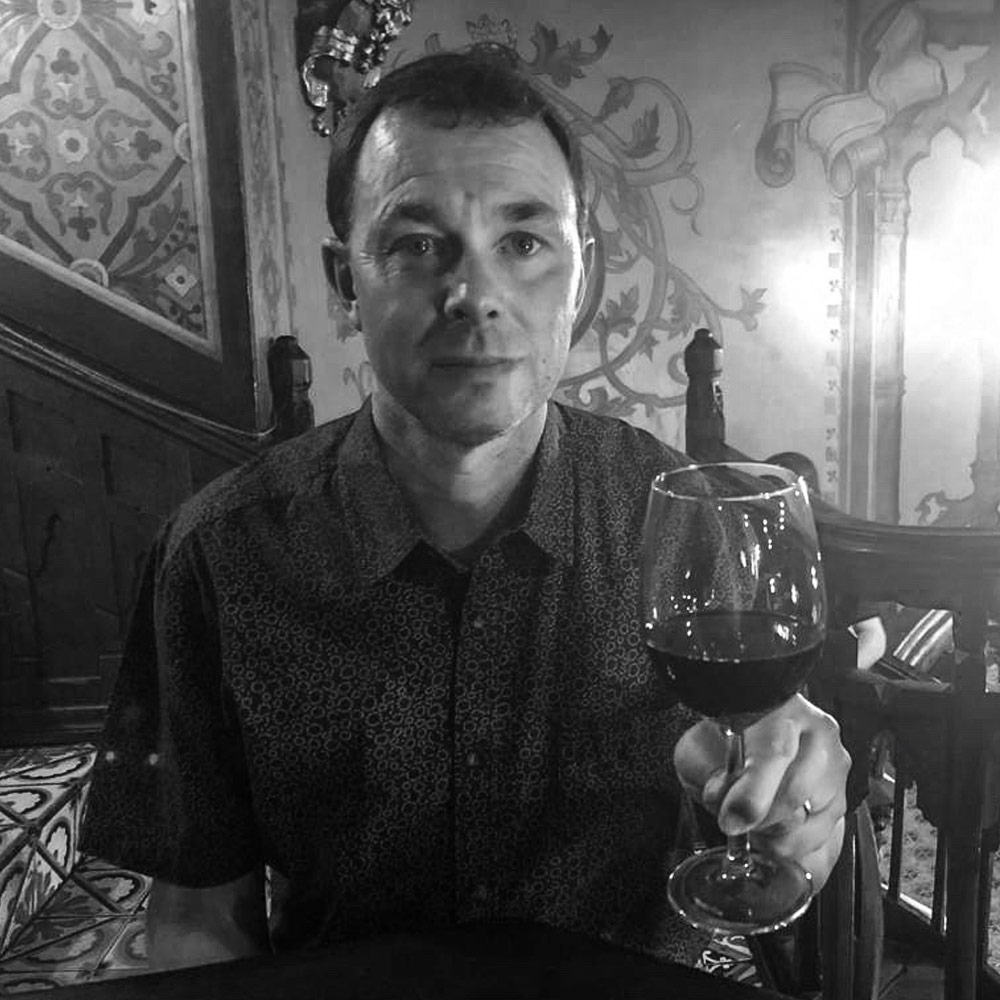There can be few better views from the top of a vineyard in England than Upperton’s. Andy Rogers, owner and vineyard manager, never tires of the south-facing vista of the South Downs escarpment, viewed from the terrace outside the vineyard shop. It’s not hard to see why. Andy tends 6000 vines on prime lower greensand soils - not chalk as I assumed - and he loves his job, particularly now he doesn’t have to look after the whole of the site. Initially he planted 32,000 vines but sold off the majority to Southern England Wines as part of his semi-retirement plans.
Originally from the Midlands, Andy moved to the South Downs after meeting his wife who is from the downland village of Cocking. After a career as a market gardener, he turned to viticulture after buying up a 42 acre site north of the River Rother in the shadow of Petworth Park in 2003. Noting its south-facing position, and the proximity of Nyetimber’s vineyard, he decided that wine-growing was to be his new vocation. The first vines to go in the ground were Pinot Noir Précoce, Rondo and Chardonnay but these produced disappointing results, particularly the Rondo. Andy then organised a tasting of wines bought from the now defunct English Wine Centre in Alfriston, and found that his favourite examples were sparkling wines made using the Champagne method by Nyetimber and Ridgeview. This was his Damascene conversion and he was soon planting new Pinot Noir and Pinot Meunier vines alongside more Chardonnay and Pinot Précoce. The final vines were planted in 2010 but, by this time, he had produced his first vintage (2009).
Andy remarked that it was also the pioneering spirit of Nyetimber and Ridgeview that helped to determine Upperton’s destiny as a sparkling wine vineyard. If he’d started out five years earlier he would have ended up making still wine. Nyetimber’s West Chiltington site and Ridgeview’s Ditchling location share the same greensand soils with Upperton, and it is Ridgeview’s understanding of that soil that makes it a suitable place for Andy’s wines to be blended. Upperton is not vulnerable to frosts, indeed they have only had to light bougies three times in the last fifteen years, much to the exasperation of partners, Ridgeview, a much more frost-prone site. The only real challenge is that growth can be a bit too vigorous and therefore there is a requirement for careful canopy management. Like all English and Welsh vineyard owners, Andy was delighted with the 2018 season. He reckons from 100 tonnes of grapes, the whole vineyard will produce 75,000 bottles. In addition to cellar door and online sales, Andy sells his wine to fifteen pubs locally and is in discussion with a few more. He has a loyal local following who like to bring friends for a drink and a cheese platter on the terrace. He also gets custom from people, looking for Nyetimber, driving past his vineyard and seeing it open.
I asked Andy why he decided to give his wines Latin names. He said it provided a point of difference with their competitors and added a quirky appeal. ‘Alia’, Latin for ‘distinct’ or ‘other’, is the name given to his 100% Chardonnay Blanc de Blancs, and it was this that I tried first. After floral and lemon curd aromas there is really crisp but mature stone fruit, and creaminess from the malolactic fermentation. This softens out the acidity. People tend to be divided, Andy says, on whether they prefer the Chardonnay-dominant wines, with their more streamlined fruit, or the Pinot blends which tend to be more opulent. It was a Pinot-dominant blend that I tried next. ‘Nebula’, so-called because of the mists they get at the bottom of the vineyard, is a 58% Pinot Noir, 16% Pinot Meunier and 26% Chardonnay cuvée. Noticeably yeasty on the nose, this has a palate of apricot, green apple, vanilla, biscuit and brioche in equal measure, providing an ideal balance between fruit and autolytic character. The last wine that I tried was ‘Tenebris’, Latin for dark, appropriate because this blend was made from the two classic red Champagne grapes grown at Upperton, Pinot Noir and Pinot Meunier. There is a powerful red fruit nose on the Tenebris which hints at the taste explosion to come; there are redcurrants and raspberries galore as well as a spicy note and yeasty overtones. Whilst enjoyable, this, of the three wines that I tried, most needed food but I wasn’t about to demand that! Other wines not tasted were the Chardonnay-dominant Aurora and the currently out-of-stock rosé, Erubesco.
Andy’s wines have been much garlanded over the years, winning a glut of medals in international wine competitions, notably an IWC (International Wine Challenge) Gold in 2017 for their 2013 ‘Alia’. On asking Andy whether he had any dealings with neighbours and serial award-winners, Nyetimber, he said that would be like "Plymouth Argyle turning up to talk to Barcelona". But these awards are proof that the little guy can often compete with the behemoths. And on tasting his wine, I would say that this is hardly surprising.
- 6,000 Vines
- Yes

